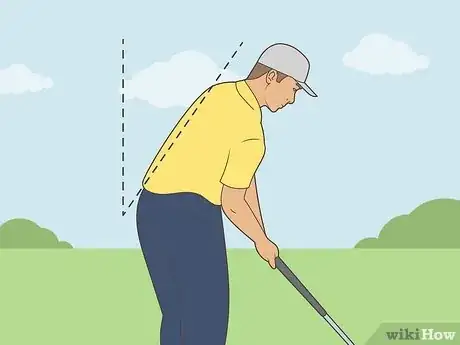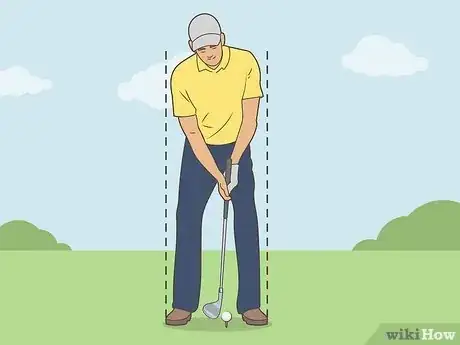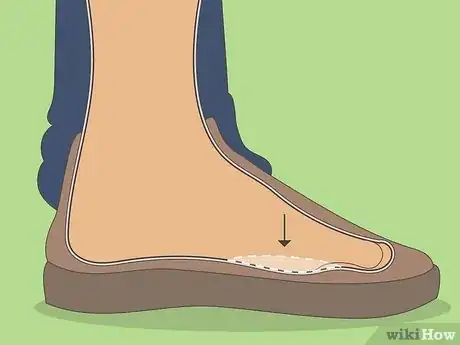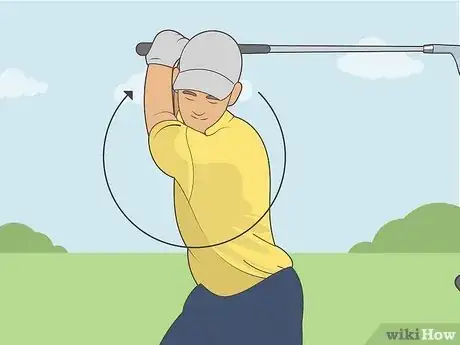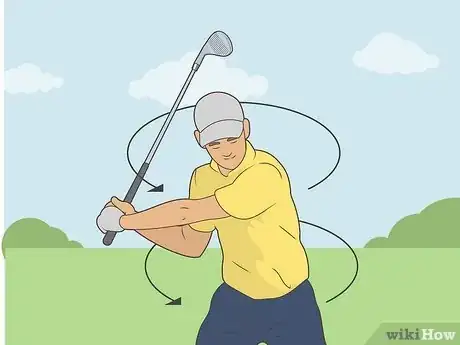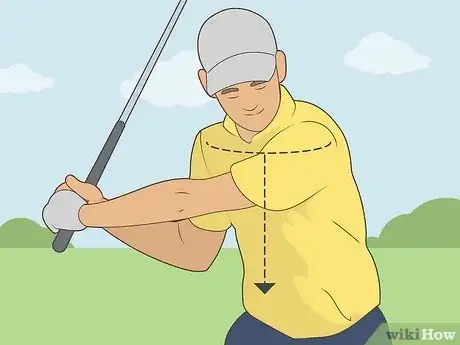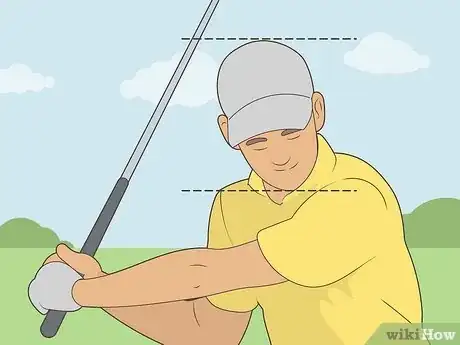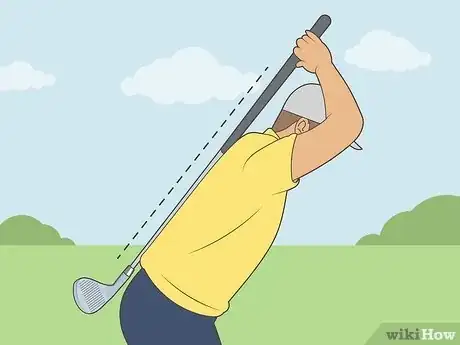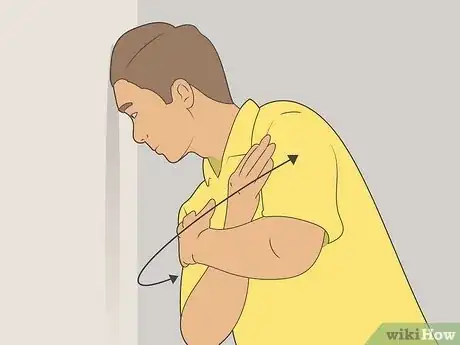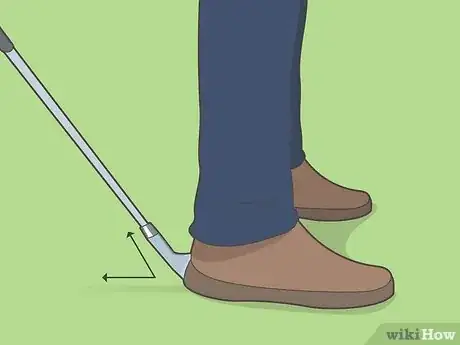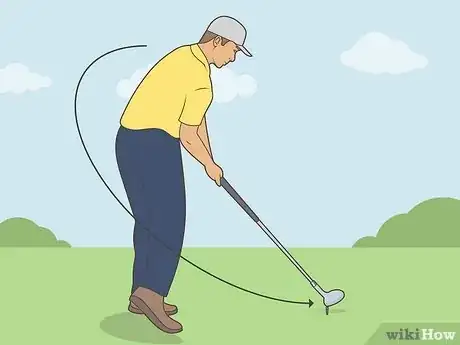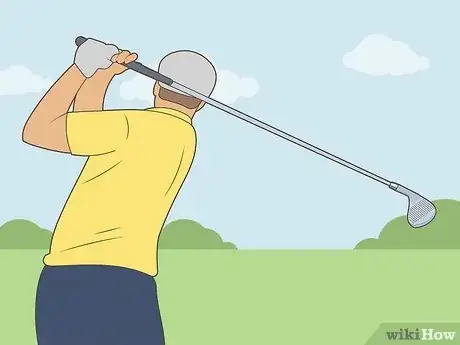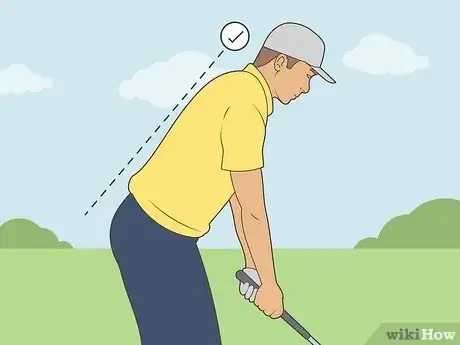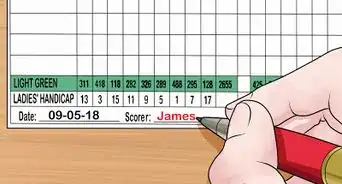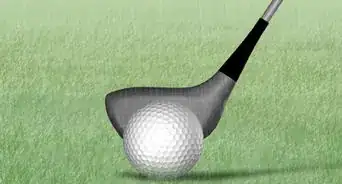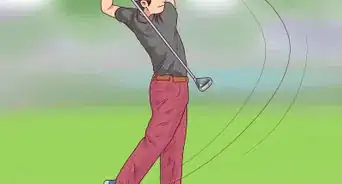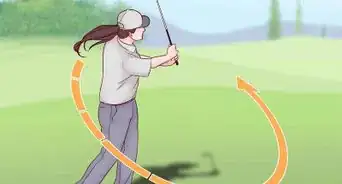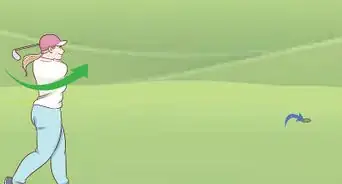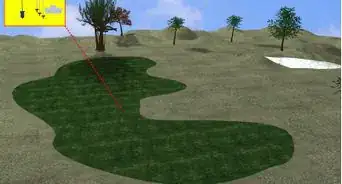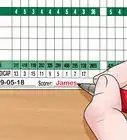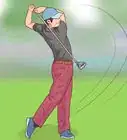This article was co-authored by Michael Metz and by wikiHow staff writer, Glenn Carreau. Michael Metz is a Golf Instructor and the Director of Instruction at Simi Hills Golf Course. With more than 15 years of experience, Michael is adept at coaching all facets of Golf. Mike uses technology, such as Flightscope, V1 Swing Suite, Blast Motion, and BodiTrak pressure mapping, to provide advanced golf training with quick results.
There are 9 references cited in this article, which can be found at the bottom of the page.
This article has been viewed 2,389 times.
If you’re looking to hone your golfing abilities, a proper stance and swinging technique are the keys to improvement! Maintaining your spine angle is all about holding the correct posture from starting your backswing until your golf club impacts the ball. In short, it’s easier to hit balls when your spine angle is nice and straight. Read on for a complete guide to maintaining your spine angle on a golf swing.
Steps
Maintaining Your Spine Angle on a Swing
-
1Get in a shoulder-width golfing stance. Plant your feet a shoulder-width apart, keeping your feet, knees, hips, and shoulders parallel to your target. Bend forward at the hips and flex your knees, pushing your rear end back. Straighten out your spine by pushing your shoulders back slightly, ensuring you have an excellent form to practice your swing.[2]
- It’s impossible to straighten your back completely! The bottom of your spine has a natural curve, so it’s helpful to focus on making your upper back as straight as possible.
- When trying to bend over the ball, it’s easy to let your upper back hunch rather than keep it straight. Be aware of your back’s shape, and correct yourself if you start hunching.
-
2Center your weight over the balls of your feet to maintain balance. Avoid shifting your weight onto your toes or heels, and balance your weight evenly between both feet. When your weight is on the balls of your feet, it’s easier to twist your foot fully on the downswing. It’ll also help you hold your posture and keep your balance throughout the swing, making it easier to maintain your spine angle, too![3]
-
3Swing the club back with your shoulders while keeping your posture. Turn your torso as you complete the backswing, letting your shoulders and hips move at the same time. Rotate your left shoulder down until it’s entirely under your chin, then begin the downswing. Keep your knees flexed, back straight, and weight on the balls of your feet the whole time![4]
- When taking your backswing, initiate it with your chest and make sure your hands are firm at the top before swinging.
- Rotating your left shoulder assumes you’re golfing right-handed. If you’re left-handed, rotate your right shoulder down under your chin instead.
-
4Move into a downswing, turning your shoulders and hips to the target. Rotate until your right shoulder is tucked underneath your chin, keep turning your hips towards the target simultaneously, and let your chest naturally turn towards the target too. Strike the ball with your golf club as your right shoulder moves into place under your chin, and let your left leg begin to straighten after impact.[5]
- As you finish your swing, your right shoulder should be slightly lower than your left, and your hips and shoulders should both be angled towards the target.
- Once again, this assumes a right-handed golfer. If you’re left-handed, your left shoulder should be underneath your chin and slightly lower than your right.
-
5Point your chest towards the ground until you hit the ball. Keep your chest down and oriented towards the ground while you make your backswing, and maintain the same posture as you rotate back around for the downswing. Start changing your posture after you hit the ball; raise your chest and angle it toward your target instead of the ground.[6]
- Keeping your chest pointed down until the last second ensures you maintain the same trajectory and angle throughout your swing.
- Rotate your chest on the way through the downswing during the swing.
-
6Keep your head stable through the backswing and downswing. Your head is positioned atop your spine, so your spine angle will change if your head moves during the swing. Imagine you have a book on top of your head while you swing, and focus on keeping your head steady so the “book” stays in place.[7]
- You don’t have to keep your head perfectly still but avoid raising or lowering it during your swing, as this cause you to lose your spine angle.
- When your overall posture is good, your spine angle will also improve. Once you’re comfortable keeping your head still and chest down, you’ll be able to maintain your spine angle without a second thought!
Drills to Improve Your Spine Angle
-
1Do a “club down the back” drill before hitting some practice shots. This is a simple drill! Just pick up your golf club and lay it across your back while in a golfing stance. Adjust until you can feel the golf club touching the back of your head, the center of your shoulder blades, and your tailbone. If you can feel it everywhere, your spine is at the correct angle.[8]
- After the drill, remove the club and use it to practice a few swings while your spine is perfectly positioned.
-
2Use a wall inside your home to do a “head against the wall” drill. Get in a normal golf stance with your head touching the wall in front of you. Then, cross your arms across your chest and practice turning your shoulders like you would while swinging a golf club. Work on moving your shoulders through a complete swing without moving your head from its position on the wall.[9]
- Since your head is located at the top of your spine, you can keep your spine angle straight if you keep your head in the same place while you swing.
-
3Keep your stance centered with the “wedge under the foot” drill. It’s tough to balance on the balls of your feet at first, but this drill can help. Set up your golf ball as usual, then place a 60-degree wedge under the heel of your trail foot. Give your club a small swing while keeping your foot on the wedge, only lifting it after you strike the ball. Once you’re comfortable, do the same thing while practicing full swings.[10]
- This exercise trains you to be more centered and balanced. When you remove the wedge, you’ll instinctively shift your weight to the center of your feet rather than your toes!
- Once you get comfortable with this posture, you’ll also find it easier to maintain it through your swings instead of standing up, improving your spine angle.
-
4Do a “slow swing drill” to perfect your spine angle. Get into a proper golfing stance with your spine straight, chest down, and feet planted a shoulder-length apart. Then, do a full swing with your golf club—but execute the swing in slow motion. Go to the top of your backswing, then bring your club down slowly until you gently hit the ball with your club finish the swing.[11]
- Use extreme slow motion to feel each movement in your swing and get used to the feeling of a straight spine. Take about a minute to complete the swing.
- Once you master slow swing drills with perfect posture, you’ll have a better understanding of how to hit the ball at normal speed!
Why is spine angle important in a golf swing?
-
1A straight spine makes your swings more powerful and accurate. You have a wider range of motion and can move more fluidly! When your spine angle is a fixed point that stays the same for the whole swing, your club will maintain the same trajectory throughout the swing from setup to execution. You’ll be able to make solid contact with the golf ball and send it right where you want it.[12]
- Picture your swing like a pendulum, with a fixed and moving point connected by a line. Making your spine angle the fixed point ensures an even, accurate swing of the “pendulum” (your golf club) every time.
-
2Maintaining your spine angle keeps your back healthy while golfing. Staying hunched over for long periods, especially if you play golf regularly, can cause upper back and shoulder pain, making it challenging to play. Keeping your spine straight has the added benefit of preserving your back posture, relieving pain, and improving your game![13]
References
- ↑ https://www.golfmonthly.com/videos/long-game-tips/how-to-set-your-spine-angle
- ↑ http://www.westridgegolfcentre.co.uk/news/top-tips/importance-correct-posture-swing/
- ↑ http://www.westridgegolfcentre.co.uk/news/top-tips/importance-correct-posture-swing/
- ↑ http://www.westridgegolfcentre.co.uk/news/top-tips/importance-correct-posture-swing/
- ↑ https://www.golfdigest.com/story/hank-haney-hit-it-pure
- ↑ https://golf-info-guide.com/golf-tips/the-golf-swing/golf-spine-angle-drills/
- ↑ https://youtu.be/s7DOly02u74?t=19
- ↑ https://www.golfpracticeplans.co.uk/maintain-spine-angle-trevino-drill/
- ↑ https://youtu.be/78ZUqnSBrJs?t=25
